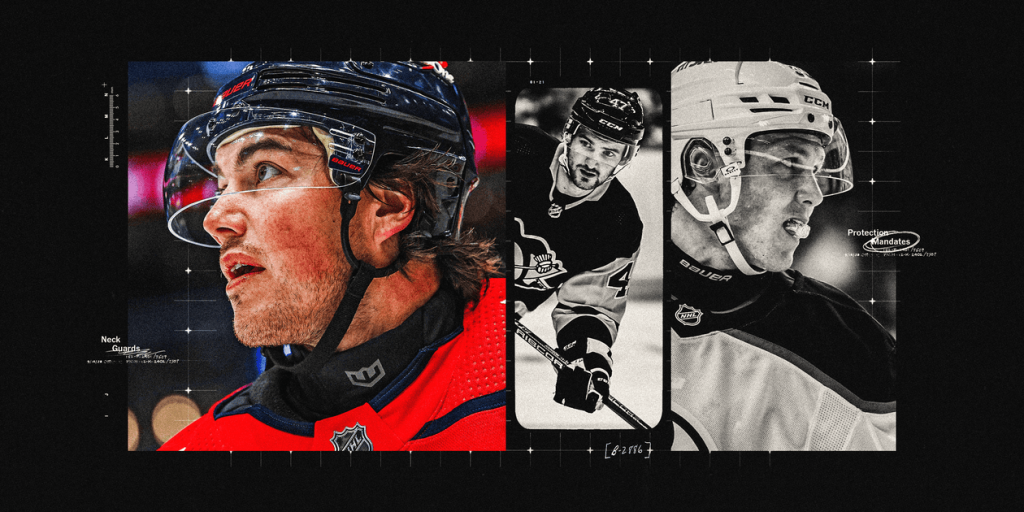Chicago Blackhawks center Jason Dickinson worries about the risk of blade cuts in the NHL, even as he rejects cut-resistant technology due to overheating concerns. His fears emerge from the realization that hockey players’ legs can act as blades in certain game situations. Previously, Dickinson has both received a blade cut and narrowly missed cutting another player. Yet, despite being pro-safety, his discomfort with overheating and cramping has always ended his trials with cut-resistant attire.
The NHL has come under scrutiny a year on from the fatal injury to former Pittsburgh Penguins forward Adam Johnson, struck in the neck by an opponent’s skate blade. After Johnson’s death, the specter of blade cuts was acknowledged as a significant risk in the game, which is made more heightened as players get both faster and bigger. NHL players are unwilling to change their habits, however, as they prefer to prioritize comfort before safety. They remain steadfast to their routines, even in the face of life-threatening risks.
Johnson’s death sparked an important movement to make the game safer within grassroots hockey. Youth, girls, high school, and junior hockey all mandate the wearing of neck protection. Even at the prestigious International Ice Hockey Federation, all players must wear neck protection. American Hockey League (AHL) and all three Canadian major junior leagues also now mandate neck guards for their players and officials. However, the NHL is yet to fully enforce neck protection, as players maintain their focus on comfort for effective performance.
T.J Oshie, a winger for the Washington Capitals, stands out as an exception amongst players who resist change. He was involved in the design of his equipment company, Warroad’s latest offering: a cut-resistant turtleneck, Tilo, built with neck and wrist protection. Although the product was well received by players, few stuck with it citing comfort and superstitions as primary deterrents. Despite this, Oshie is determined to proselytize about the benefits of such equipment, using his scarred experiences as a player.
Among the players who tried and adopted cut resistant gear is Edmonton Oilers winger Jeff Skinner, who uses Bauer’s neck protector. Emphasising that risks come in various shapes, Skinner believes that using protective gear depends largely on a player’s personal choice. Another advocate for gears is Joey Anderson, a former friend and teammate of Johnson’s, who continues to wear a neck guard. Both players agree that the change is happening slowly and will stem from new players at lower levels who are accustomed to the new rules.
The shift to safer gears isn’t just about forcing the players but creating effective solutions that cater to their needs. Dr. Mike Stuart, the chief medical officer for USA Hockey, argues that imposing a particular equipment that players find uncomfortable isn’t the right way forward. As more younger players grow accustomed to wearing neck guards, they will be more likely to continue the practice in NHL. It is not the immediate changes that show promise but the long-term shifts that will gradually make the sport safer.


